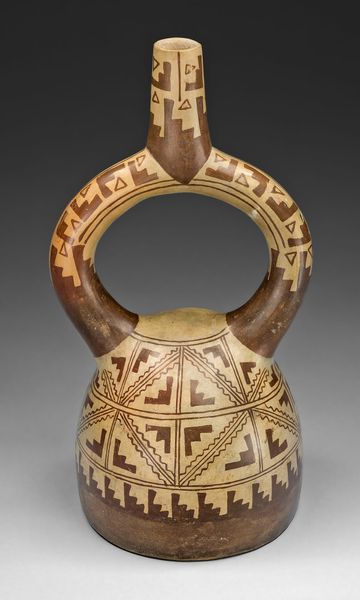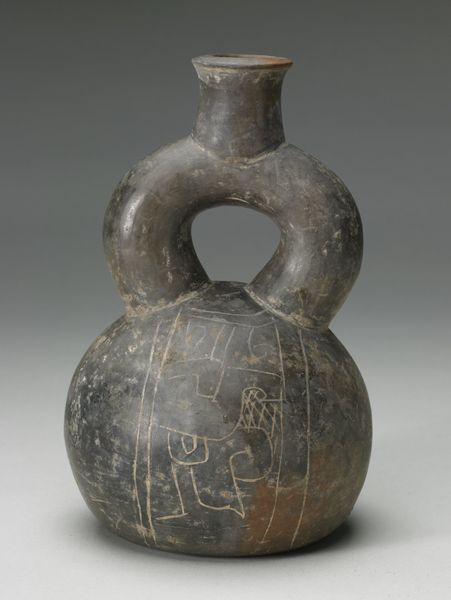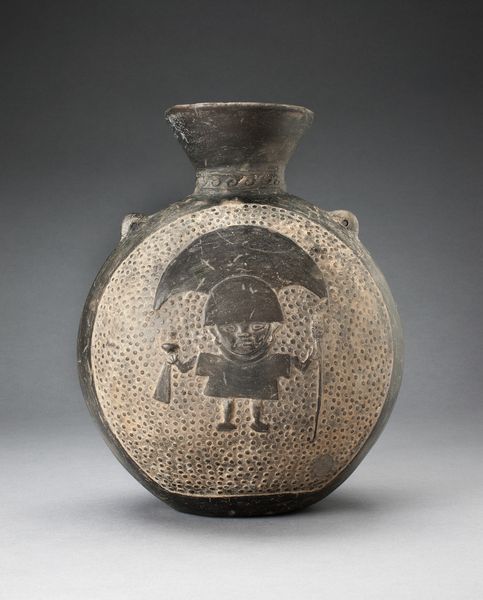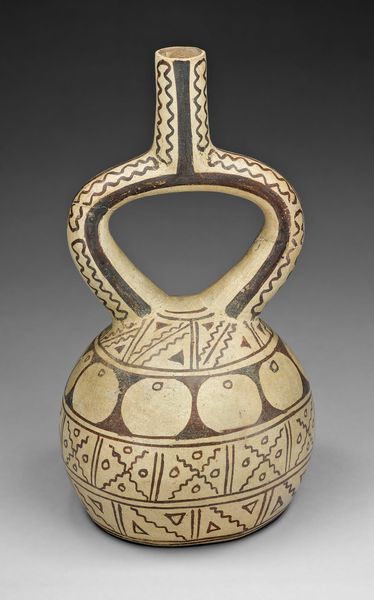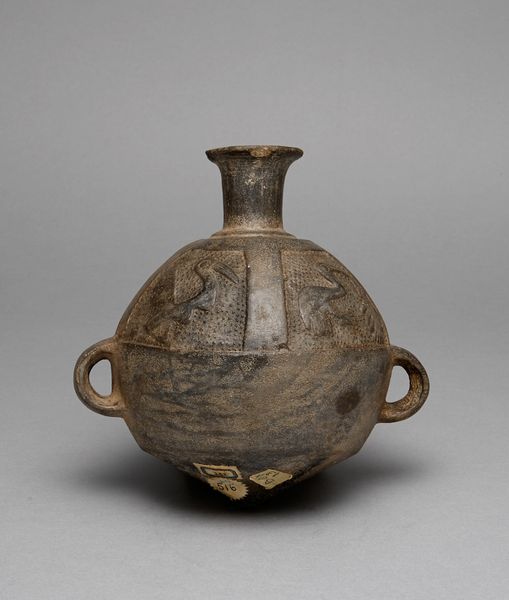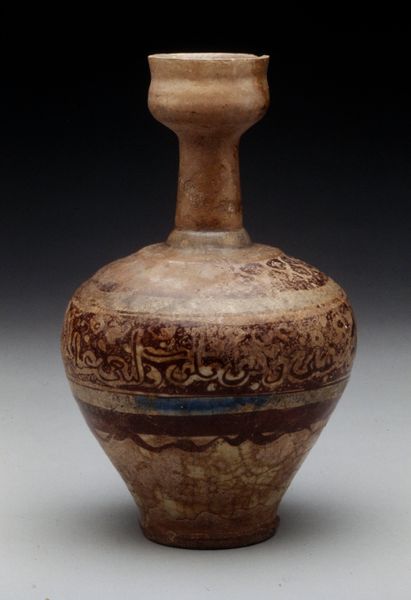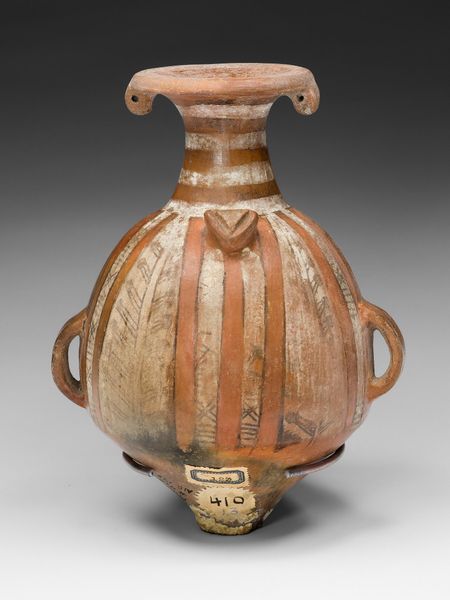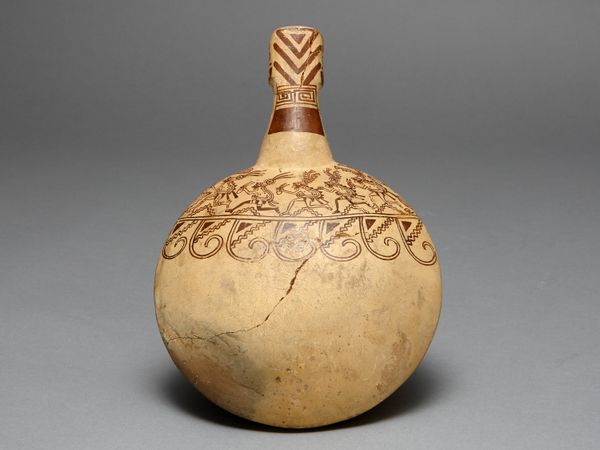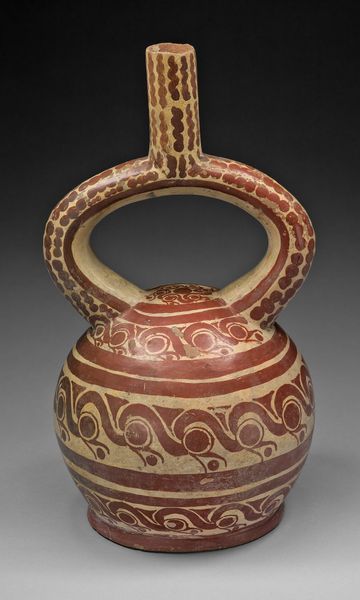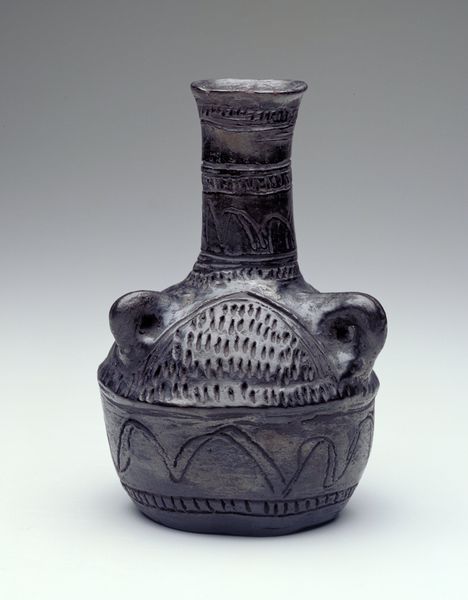
ceramic
#
ceramic
#
figuration
#
ceramic
#
indigenous-americas
Dimensions: 9 1/8 x 5 x 5 1/4 in. (23.18 x 12.7 x 13.34 cm)
Copyright: Public Domain
Curator: This is a stirrup spout vessel, crafted by the Moche people between 201 and 800 AD, now residing here at the Minneapolis Institute of Art. The vessel is primarily ceramic. Editor: Its form strikes me first – that unusual stirrup handle rising from a bulbous body. It’s weathered, clearly ancient, but the geometric patterns still convey a graphic quality. Curator: The stirrup spout is quite characteristic of Moche pottery, isn't it? These vessels weren't just utilitarian; they served as potent forms of communication and status display. Analyzing the iconography helps us decode aspects of their worldview, ritual practices, and social hierarchies. Editor: And speaking of the iconography, you’ll note its decoration: What’s immediately striking is the repetitive nature of the decoration. It's all made of earth-borne materials too. One wonders about the labor that went into extracting the materials, forming the vessel, painting it so elaborately, and finally firing the ceramic. The skill is evident. Curator: Absolutely. Consider that this was likely created within a workshop setting, where artisans specialized in different stages of production. This division of labor allowed for increased efficiency, reflecting the complex social structure of the Moche. Editor: Do we know if the patterns and figures convey a certain function or meaning within that community? Curator: Undoubtedly, though the specifics are debated. Some scholars interpret the imagery as depicting mythical narratives or scenes of everyday life. The ability to decode and circulate this kind of imagery solidified power structures. Access to such refined ceramic objects would have also been a signifier of social status. Editor: Seeing the repeated forms gives the piece almost an industrial feel despite being handcrafted and ancient. Thinking about it makes one ponder how things like raw materials, processes of production, and access to luxury work today. Curator: Yes, it forces us to reconsider what we mean by concepts of labor and artistic expression, especially given our Western-centric perspectives on what counts as art. Studying works like this broadens our understanding of the diverse roles that visual culture has played in societies across the globe. Editor: Looking at the vessel closely, appreciating its texture and pondering its place in the distant past offers an experience that encourages a more thoughtful look into labor and art history. Curator: Agreed, it provides insight not just into a distant past, but reflects how we, as viewers, are embedded in global exchange networks of labor, materials, and meanings today.
Comments
No comments
Be the first to comment and join the conversation on the ultimate creative platform.
